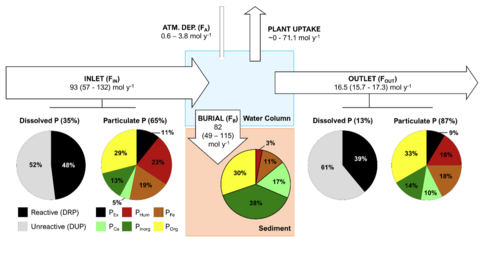In a new paper published in Environmental Science: Advances, a team of ERG researchers unravels the biogeochemical processes responsible for the efficient removal of dissolved reactive phosphorus (DRP) in a stormwater management pond in the Greater Toronto Area. The results indicate that the formation of calcium phosphate minerals in the sediments accumulating in the pond is responsible for the retention of DRP. They further propose that geochemical interventions stimulating calcium phosphate minerals in stormwater green infrastructure may be a useful strategy to reduce export of DRP from urban landscapes, hence, protecting downstream receiving water bodies from eutrophication.

Conceptual diagram showing the phosphorus mass balance for the stormwater pond in Richmond Hill, Ontario, Canada. The diagram shows the phosphorus mass fluxes into and out of the pond water column via the inlet stormwater and atmospheric deposition and via plant uptake, the outlet stormwater, and burial in the sediments, respectively. The diagram also shows the speciation of phosphorus into the various dissolved and particulate phosphorus pools measured with sequential chemical extractions.